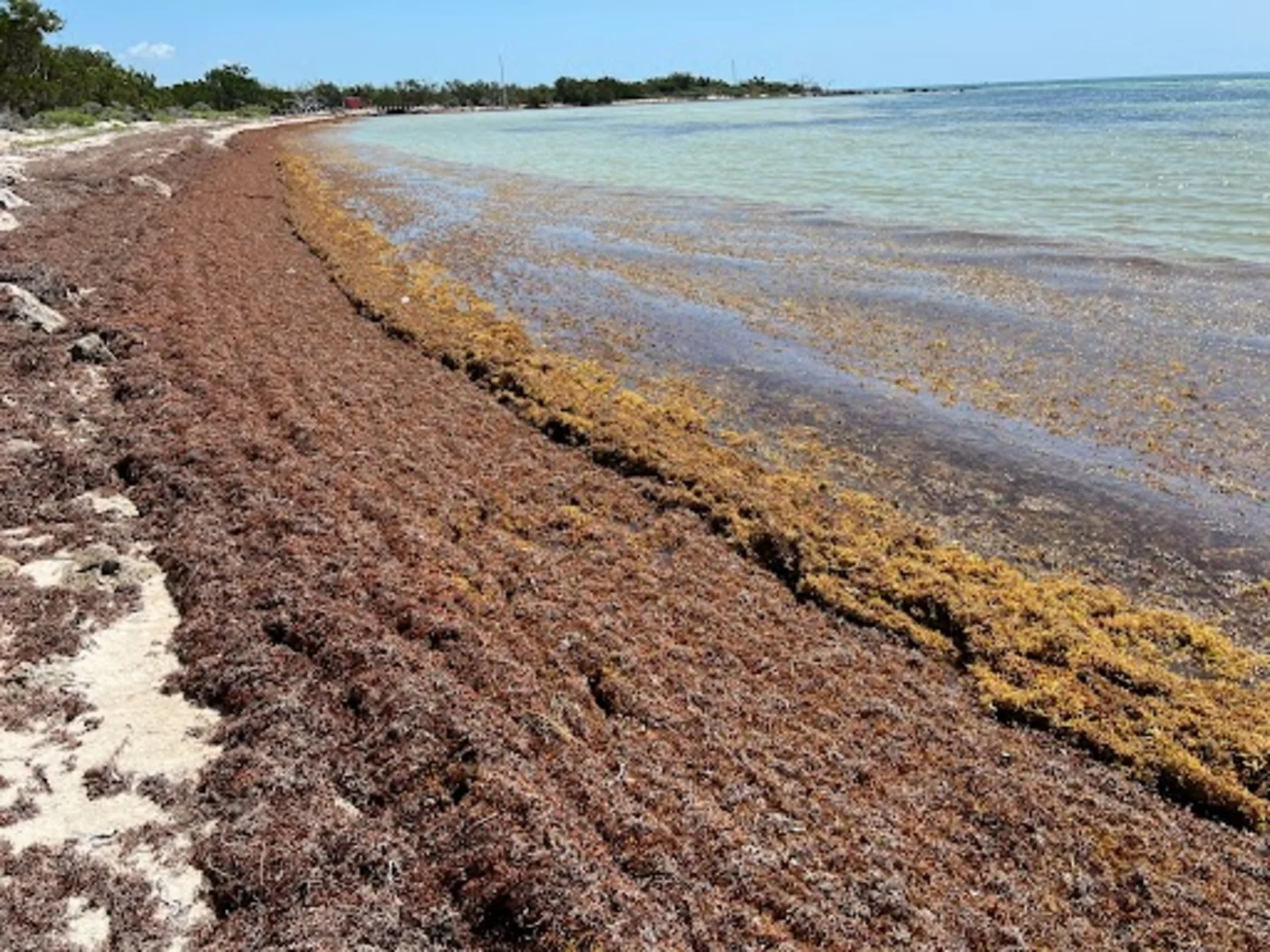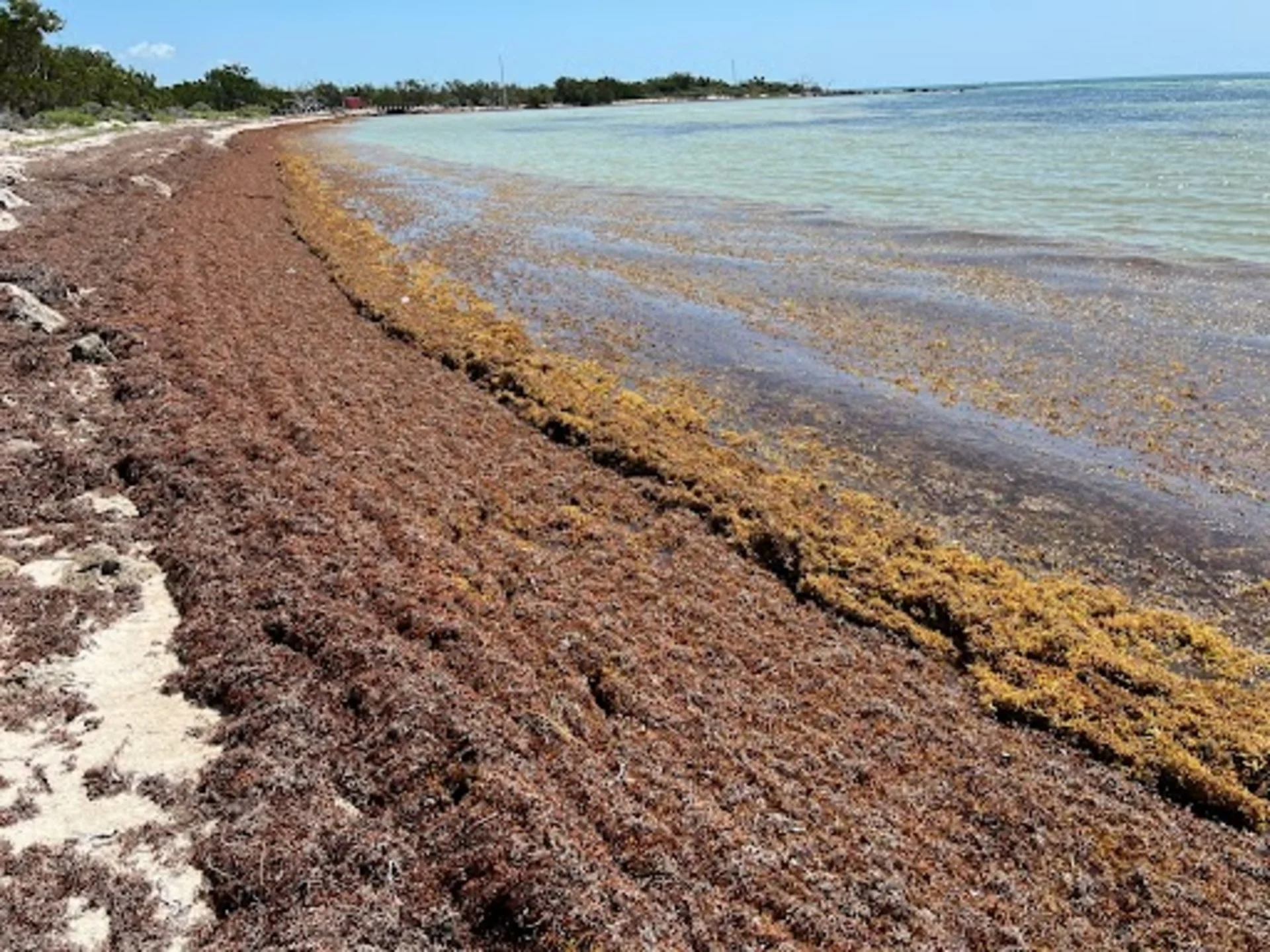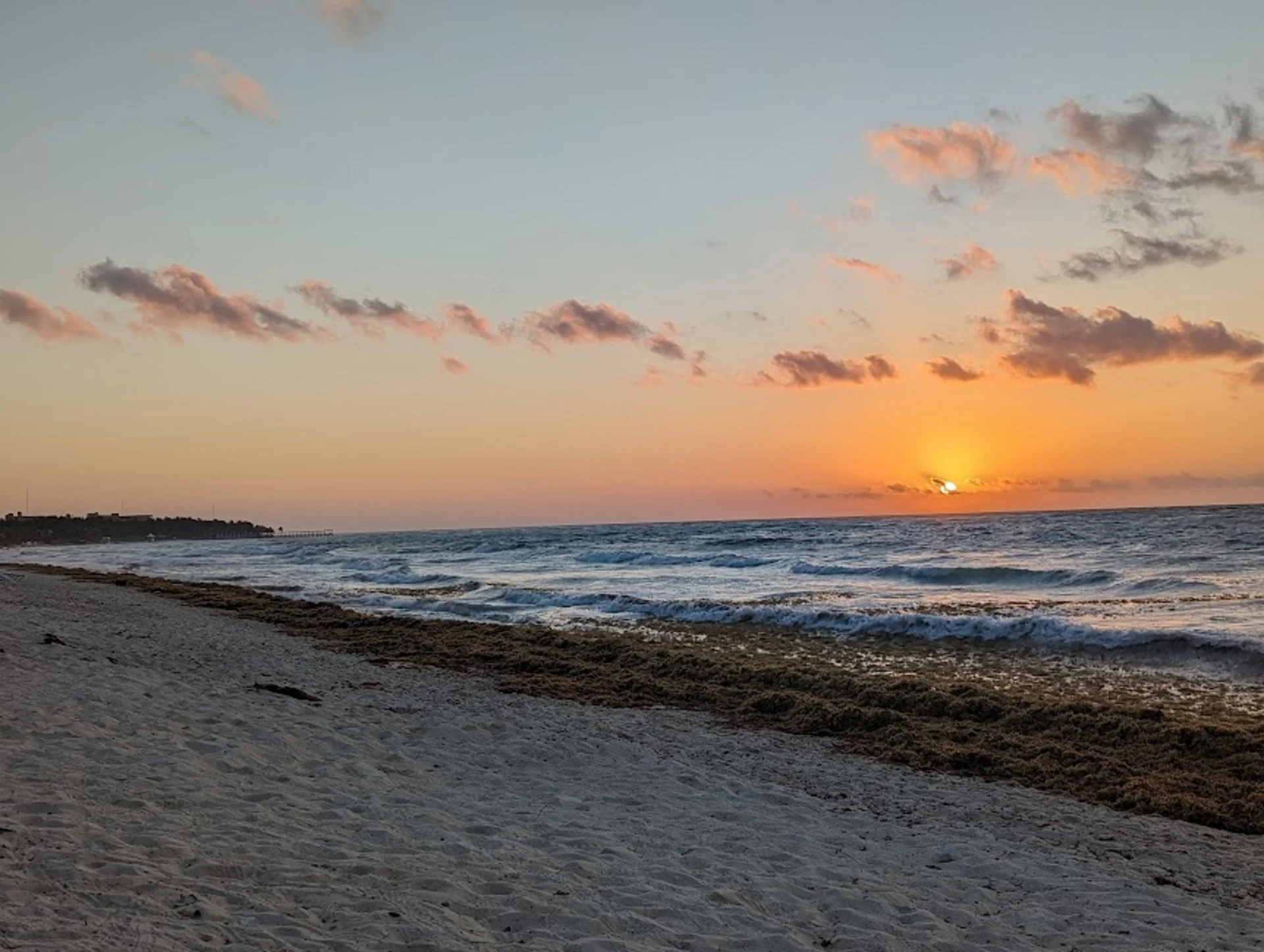
Green Invasion: 8,000-km carpet of seaweed heads toward southern U.S. beaches
It may sound like something out of a horror film, but there is a giant, green sea blob floating towards beaches in Mexico and southern United States.
It is called sargassum, and it grows in the Sargasso Sea. Sargassum is leafy, rootless, and buoyant algae that collect and float through the ocean.
Out in the open, it soaks up carbon dioxide and provides a habitat for several bird, mollusk, and turtle species.
Closer to shore, though, it can disrupt local ecosystems and the economy by smothering coral, keeping tourists away, and reducing fishing yields.

Photo Credit: Brian LaPointe/ PhD Research Professor Florida Atlantic University Harbor Branch Oceanographic Institute. Location: Bahia Honda State Park, Florida Keys.
Since 2011, large portions of the great Atlantic sargassum belt have been breaking free and making their way toward the United States and Mexico.
The right combination of wind and currents can push it ashore. Currently, it is moving westward, where it could potentially inundate beaches along the Florida Keys, throughout Mexico's Yucatán Peninsula, and in eastern portions of the Caribbean.
This year, the patch of seaweed stretches approximately 8,000 km. When portions wash ashore, they can cause serious issues for humans and wildlife.

Since 2011, huge amounts of sargassum have broken loose every year, ending up on beaches. Above, a satellite image showing the “Great Atlantic Sargassum Belt” in March, when it was 8,000 kilometers long (Source: [CC BY-ND], USF/NOAA.).
For instance, seaweed piles on beaches make it difficult for sea turtles to lay eggs and for hatchlings to return to the sea.
Large amounts of seaweed release awful smells. And if the smell doesn't turn tourists away, then the toxicity will. The seaweed vapour can cause health issues due to the release of hydrogen sulfide gas and arsenic.
Removing sargassum can be difficult, as the use of heavy machinery can put turtle nests at risk. Even after the seaweed is clear, it is a challenge to dispose of it.

Photo Credit: Marie Chisholm. Location: Akumal, Mexico
Researchers are working to find a solution for disposal, one possible method involves sinking the sargassum at sea. Sinking the sargassum deep in the ocean could bury carbon dioxide for hundreds of years, however, scientists are still testing this theory to determine if it is a feasible approach.
Canadian east coast beaches are not at risk, but if you plan on travelling to places like Florida or the Caribbean this spring and summer, you may find yourself in a sticky situation.






